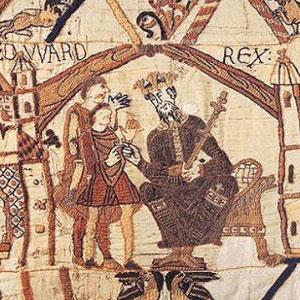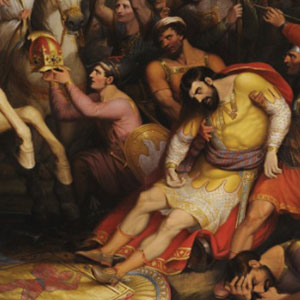Activity 8
Reflecting on the Bayeux Tapestry
Your Task
Part of the reflection process is summarising your thoughts and coming to a possible conclusion. Answer the questions below on screen or in this Word Doc version to save your answers.
Historical Knowledge
Read these opinions by historians about the worth of the Bayeux Tapestry.
‘The Bayeux Tapestry was probably made in Canterbury around 1070. Because the tapestry was made within a generation of the Norman defeat of the Anglo-Saxons, it is considered to be a somewhat accurate representation of events. Based on a few key pieces of evidence, art historians believe the patron was Odo, Bishop of Bayeux. Odo was the half-brother of William, Duke of Normandy. Furthermore, the tapestry favourably depicts the Normans in the events leading up to the battle of Hastings, thus presenting a Norman point of view.
‘The Bayeux Tapestry is an account of the medieval period in Normandy and England like no other. It provides information about civil and military architecture such as castle mounds, armour consisting of a nasal helmet, hauberk and oblong shield and seafaring in the Viking tradition. Through the great number of items depicted, it also gives precious details of everyday life in the 11th century... The Tapestry is both an account of an epic military story, and a spiritual work about how an act of perjury is punished.
The Bayeux Tapestry has been a useful source for historians, who have used it to discover more about the events of the Battle of Hastings, as well as the viewpoint of those who witnessed it. However, as the tapestry was commissioned by the Normans, it paints a one-sided view of the event.
Source: https://historylearning.com/medieval-england/bayeux-tapestry/
Historical empathy is the ability to identify a historical figure's lived experience
Imagine that you have been tasked to write your summary of the battle to brief Bishop Odo who commissioned the Bayeux tapestry for his cathedral. Odo was the bishop of Bayeux in Normandy and half-brother of William the Conqueror.
- Are there moral messages in the tapestry? For example Harold’s oath to William.
- Does anyone have a vested interest in presenting the events in a certain light?
- The Normans probably commissioned the tapestry.
- Does it depict Norman culture accurately?
- The Normans invaded England.
Historical Skills
Give an example of how you used each of the following skills in this unit of work.
| Identifying the issue | |
| Analysing the issue | |
| Interpreting relevant sources of evidence | |
| Comparing/evaluating accounts | |
| Connecting various sources of evidence | |
| Identifying causes of events | |
| Sequencing historical events | |
| Forming conclusions | |
| Presenting these conclusions | |
| Understanding continuity and change |

